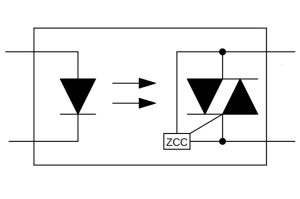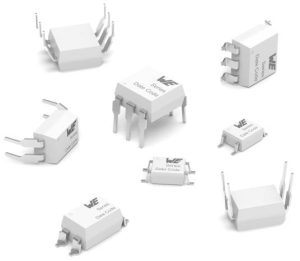They are called WL-OCTR, and come in a choice of packages: through hole DIP-4 or DIP-6, or surface-mount SOP-4. Through-hole parts offer 5kV breakdown between input and output, which drops to 3.75kC for surface mount. DIP parts can also be supplied with legs bent for surface-mounting.
As well as the packages, there are multiple versions, offering a choice of trigger current (5, 10 or 15mA), blocking voltage (250, 400 or 600V) and trigger style (zero-crossing or any-time).

Typical on-state output voltage varies from part to part but is around 1.5V at 100mA, and 2.5V is the maximum. Off-state leakage tends to bu under 100nA. At least 1,000V/µs can be withstood on the output without spontaneous triggering.
Maximum output power dissipation is around 300mW, and the packages can handle around 400mW. Single pulses of up to 1A can be handled on the output side.
“Like all optocouplers from Würth Elektronik, the newest addition to the optocoupler portfolio is certified to all necessary standards: UL1577, EN IEC 60747-5-5 VDE 0884-5, CQC GB 4941.1-2022,” according to the company.The structural design is ingenious, showing the aesthetics of engineering.
Find the top level product page, and an example data sheet for zero-crossing types here , or random trigger here.

